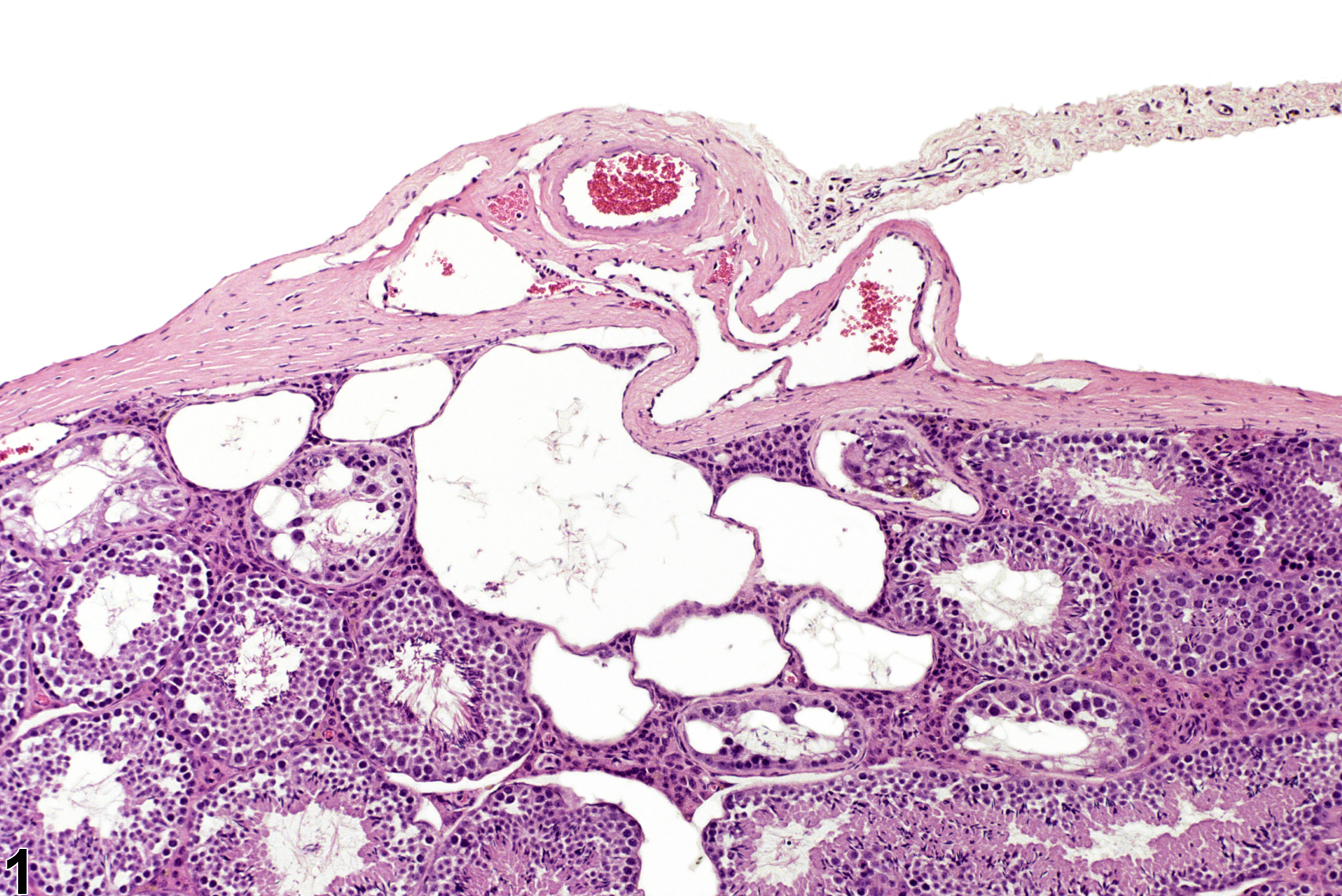Reproductive System, Male
Testis - Rete Dilation
Narrative
La DK, Johnson CA, Creasy DM, Hess RA, Baxter E, Pereira M, Snook SS. 2011. Efferent duct toxicity with secondary testicular changes in rats following administration of a novel leukotriene A4 hydrolase inhibitor. Toxicol Pathol 40:705-714.
Abstract: http://www.ncbi.nlm.nih.gov/pubmed/22552396Piner J, Sutherland M, Millar M, Turner K, Newall D, Sharpe RM. 2002. Changes in vascular dynamics of the adult rat testis leading to transient accumulation of seminiferous tubule fluid after administration of a novel 5-hydroxytryptamine (5HT) agonist. Reprod Toxicol 16:141-150.
Abstract: http://www.ncbi.nlm.nih.gov/pubmed/11955945
Testis, Rete testis - Dilation in a male B6C3F1 mouse from a chronic study. The rete testis is dilated.


